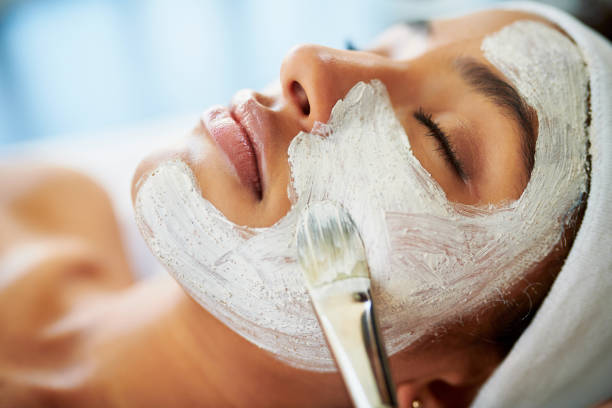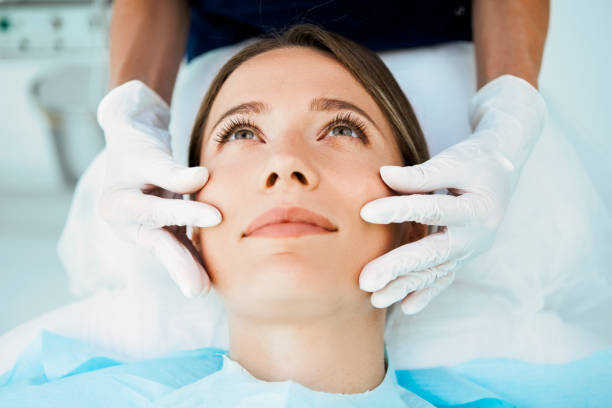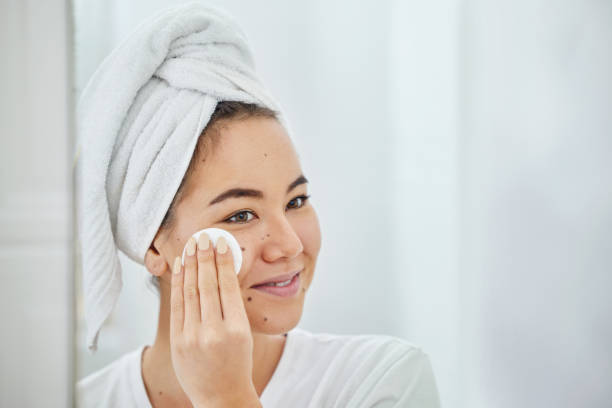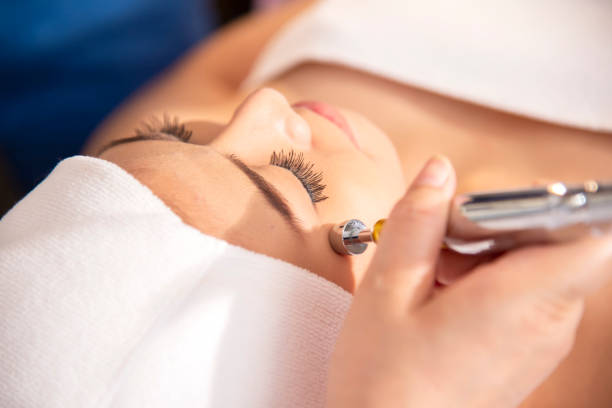When it comes to reviving your skin’s radiant glow, a chemical peel is a powerhouse procedure. Yet, many individuals are curious about the aftermath, particularly concerning the shedding of the skin. Peeling is a natural and expected part of the chemical peel experience, commonly commencing a few days post-treatment. In this article, we’ll explore the nuances of the peeling process, including the key factors that determine its onset and duration, as well as how to take care of your skin before, during, and after peeling occurs, to assure a smooth and effective rejuvenation.
The Chemical Peel Procedure – Setting the Stage for Skin Peeling

A chemical peel involves the application of a chemical solution to the skin, designed to remove the outermost layers and stimulate cellular renewal. The intensity of the peel can range from light, which targets superficial blemishes, to deep peels that reach the lower dermal layers to address more significant skin issues. Your choice of peel will influence not just the potential results, but also the timeline and experience of post-treatment peeling. Here, we delineate the types of peels you might encounter:
- Superficial Peels: These generally use mild acids like alpha-hydroxy acid and are ideal for light exfoliation, targeting uneven pigmentation, acne, and fine wrinkles.
- Medium Peels: Trichloroacetic or glycolic acid are often employed in these peels for a deeper exfoliation, suitable for treating acne scars and more pronounced signs of aging.
- Deep Peels: Phenol acid is used in these intense treatments to penetrate the lower dermal layer, resolving deep wrinkles and pre-cancerous growths.
Pre-Peel Preparation and Immediate Aftercare
To ensure you attain the best possible results from your chemical peel, proper skin preparation is key. This involves cleansing your skin regularly, avoiding certain products and medications that might interfere with the peel, and protecting your skin from sun exposure. Following your peel, immediate aftercare is crucial to facilitate healing and mitigate any side effects. Your clinician will provide specific instruction which might include the use of gentle cleansers, moisturizers, and strict sun avoidance. Consistent adherence to these guidelines forms an integral component of the treatment’s success.
The Peeling Phase – When Does the Magic Happen?

It’s the peeling that signals the commencement of the skin’s rejuvenation, with the shedding often indicating the start of the regeneration process. Clinically, peeling begins when the bonds between old skin cells dissolve, allowing them to slough away and make room for new growth. Light peels may result in minimal flaking, whereas deeper peels can cause the skin to shed significantly. Typically, peeling can start anywhere from 48 to 72 hours after treatment and might persist for up to two weeks, depending on the intensity of the peel. Below, we’ll look at how individual skin responsiveness and peel characteristics can vary the peeling timeline.
Factors Influencing Your Peeling Timeline
Your skin type and condition can significantly impact not only your peeling journey but also the overall outcome of a chemical peel. For example, sensitive skin might experience a more pronounced and prolonged peeling phase, whereas oilier skin types may have a quicker recovery. Furthermore, high-concentration peels or those with penetrating agents aim to address more substantial skin issues and therefore tend to initiate a more intensive peeling process. The table below contrasts the effects of different peel intensities on the peeling timeline:
| Type of Peel | Intensity Level | Typical Onset of Peeling | Duration of Peeling |
|---|---|---|---|
| Superficial | Low | 1-2 days | 3-5 days |
| Medium | Moderate | 2-3 days | 5-7 days |
| Deep | High | 3-4 days | 7-14 days |
Tips to Manage and Support the Peeling Process
While the sensation of peeling skin might be disconcerting, there are effective strategies to make the process more tolerable. Initially, it’s important to resist touching or peeling off loose skin manually as it can exacerbate irritation or even lead to scarring. Hydration is instrumental, both internally by drinking plenty of water and externally through the use of suitable moisturizers. Avoiding sun exposure is equally essential since newly revealed skin is highly susceptible to damage. Furthermore, abstain from active skincare products that contain retinoids or acids during this delicate time. Below are some practical dos and don’ts to observe during the peeling phase.
Dos and Don’ts of Peeling Care
- Do keep the skin moisturized with fragrance-free, gentle products.
- Do wear sunscreen with an SPF of at least 30 when going outdoors, even on cloudy days.
- Don’t pick at peeling skin, as tempting as it may be, to prevent infection and scarring.
- Don’t use exfoliants or harsh cleansers that could irritate your sensitive skin further.
- Don’t partake in heavy exercise resulting in excessive sweating during the initial peeling days.
Post-Peeling Care and Long-Term Skin Maintenance
Upon the conclusion of the peeling phase, it’s not time to neglect your skin care. Continuing a maintenance regimen that emphasizes protection and gentle nourishment is fundamental to sustain the gains achieved from the peel. This includes the continued use of a broad-spectrum sunscreen, engaging in a regular gentle skincare routine, and receiving follow-up treatments if advised by your skincare professional. Treat your newly emerged delicate skin with care, and in turn, it will deliver a rejuvenated, more youthful appearance you’re sure to love.
Conclusion
In summary, peeling is an intrinsic part of the chemical peel recovery process, usually beginning within the first few days post-procedure. The extent and duration of peeling can vary widely, influenced by the peel’s strength and your skin’s characteristics. Key to navigating this phase is understanding the role your actions play in healing and protecting your skin. By following prescribed care instructions before, during, and after the peel, and arming yourself with the knowledge of what to expect, you can ensure a smooth peeling journey and emerge with revitalized and radiant skin.
FAQs
In the spirit of clearing any lingering uncertainties, let’s delve into some pressing questions with succinct precision:
- How long after a chemical peel before you typically start to see peeling?
Peeling usually begins around 48 to 72 hours after the chemical peel. The onset varies depending on the peel’s depth and your skin type. - Is it safe to speed up the peeling process by exfoliating or pulling off the skin?
It’s critical to allow the skin to peel naturally. Detaching the skin before it’s ready can result in scarring or infection. - How can you tell if your skin is peeling too much or if there’s a problem?
If peeling is accompanied by excessive redness, unbearable pain, or signs of infection like pus or severe swelling, contact your skincare provider immediately. - What should you do if you experience no peeling after a chemical peel?
No visible peeling doesn’t always equate to an ineffective peel. Still, follow your clinician’s aftercare advice. If you’re concerned, consult with them to understand your specific results. - Can a chemical peel affect how your makeup applies, and if so, for how long?
Post-peel skin may be too sensitive for makeup during the initial peeling phase. Once peeling has discontinued, a smoother canvas typically allows for easier makeup application using gentle, non-irritating products.




